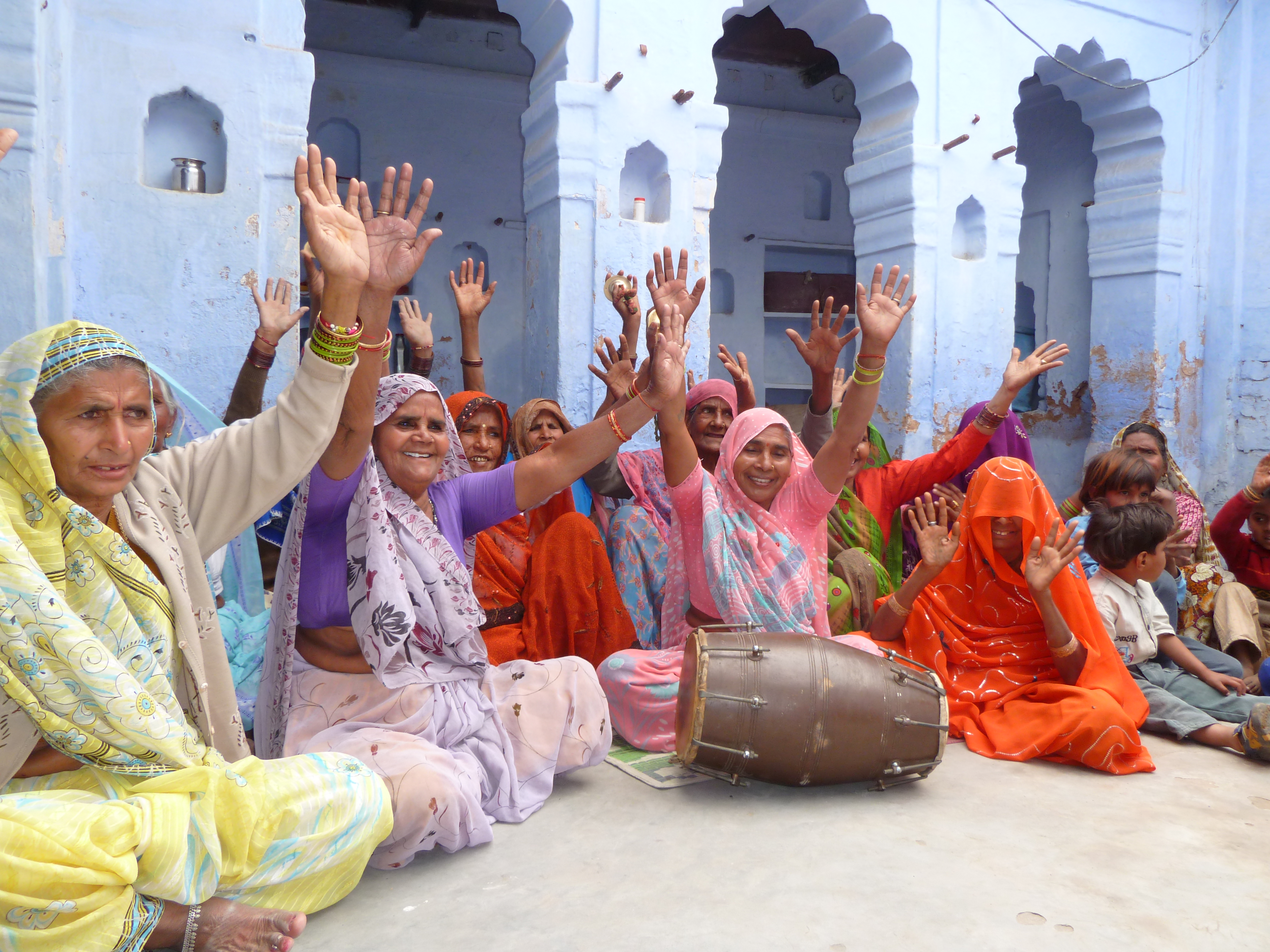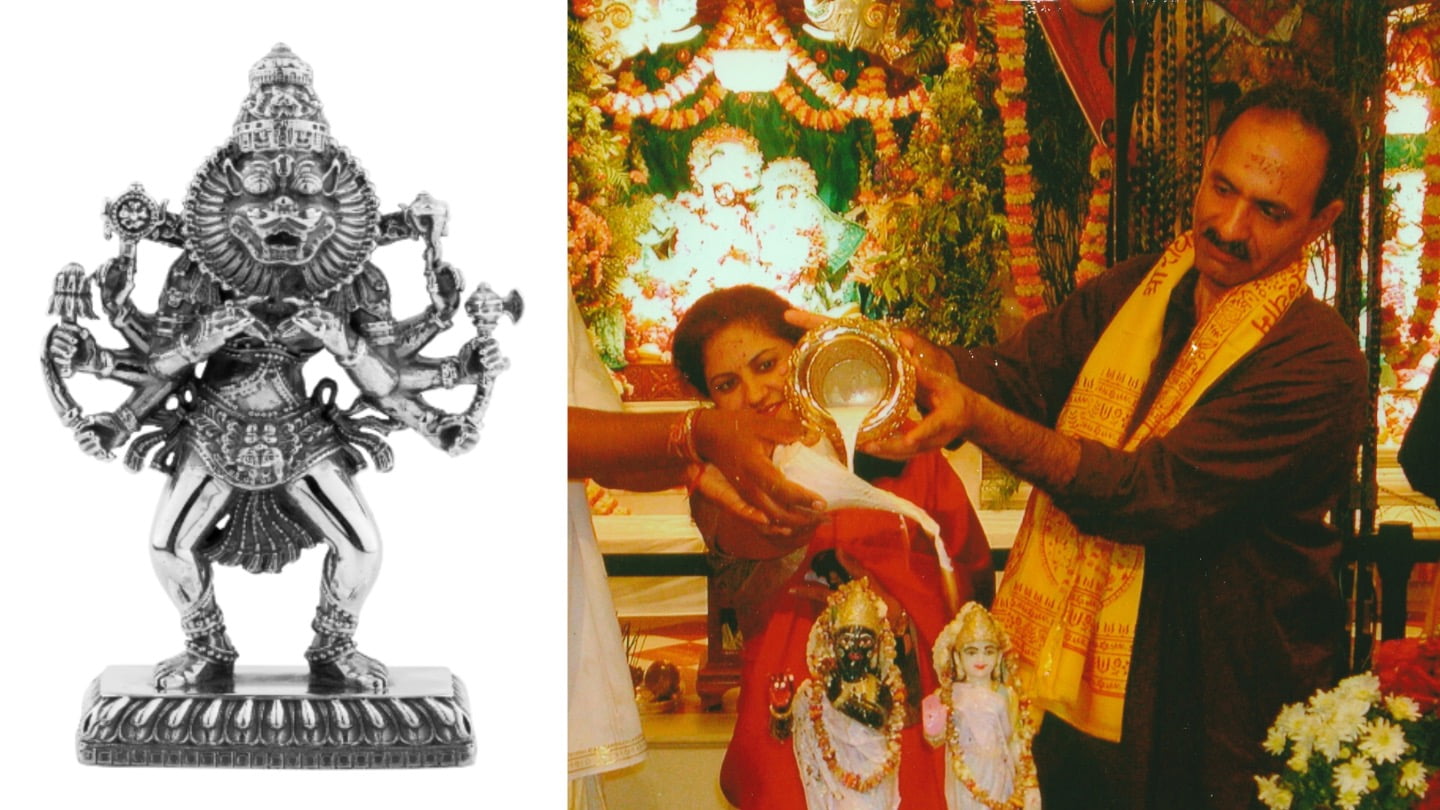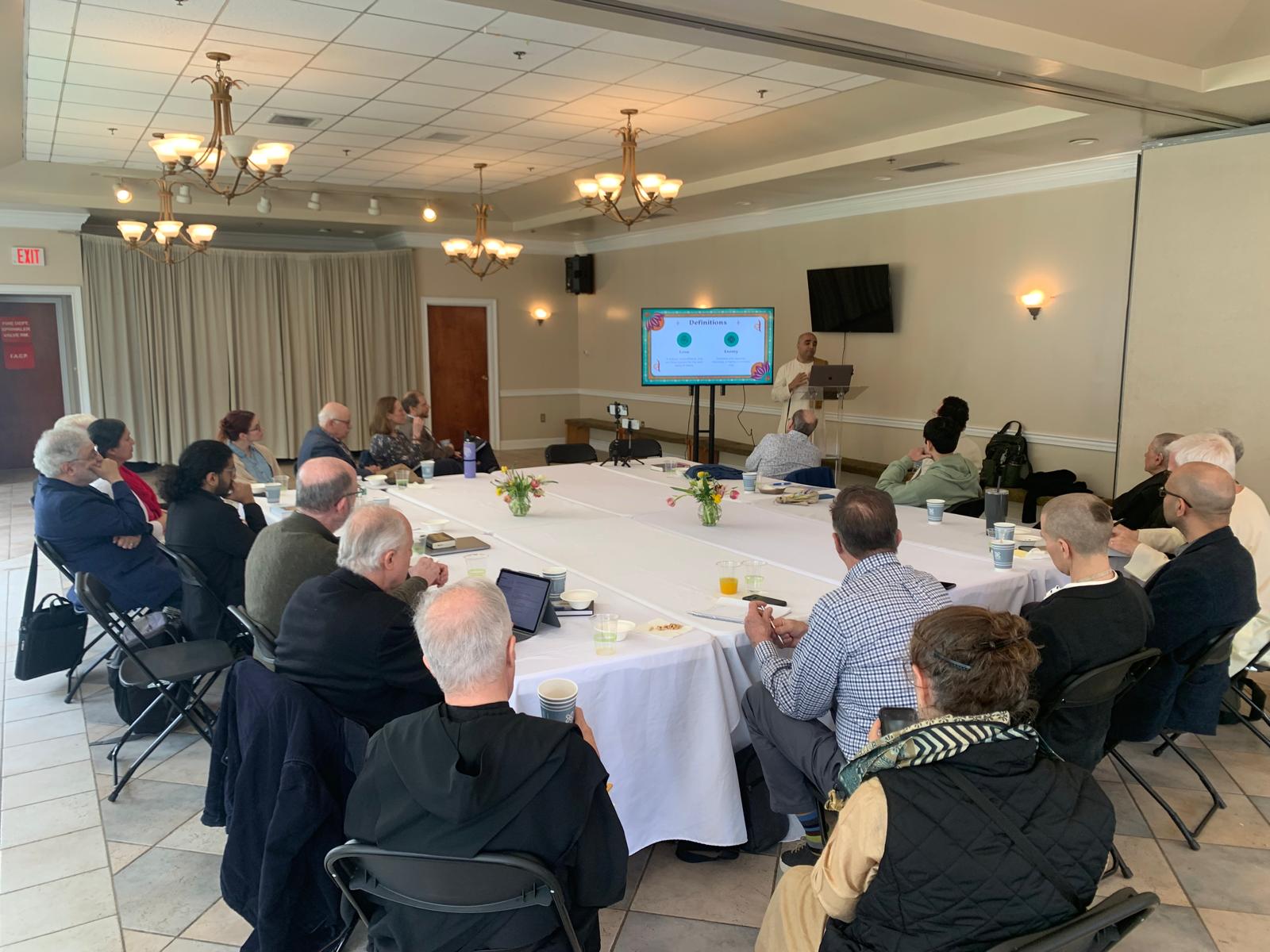Upcoming Film, Tour and Book Highlight the Women of Bhakti
By Madhava Smullen | Oct 23, 2011

Devotee film-makers Jahnava Dasi and Hillary Tapper have just wrapped shooting on Women of Bhakti, a film about inspiring women following the ancient path of loving devotion to God and His servants that will be released along with a tour and a book in Summer 2012.
Director Jahnava Dasi, who joined ISKCON in 1988 and has previously produced documentaries about ISKCON Dallas for cable television, says she has always been interested in historical women in the Bhakti tradition—some celebrated and written about, but many unsung heroines whom we will never know about.
About a year ago, however, she realized how she could combine this interest with her desire to reach out to the burgeoning yoga community. A hatha yoga practioner as a teenager, she had put it to one side during the first ten years of her training in Krishna consciousness, but later had become a certified yoga teacher, and had encountered many students who wanted to know more and were the perfect recipients for the message of Bhakti yoga.
“I live in the ISKCON community in remote Alachua, Florida with my husband and daughter, so it was difficult,” she says. “I would go away for a weekend to teach workshops to only twenty or thirty people at a time, and then return home to my family, and everything would be difficult without me. So I thought, how can I effectively reach more people, while still being able to take care of my responsibilities as a mother?”
Praying to Krishna about how she could be of more service to the yoga community, Jahnava thought about how eighty per cent of it consisted of women, and decided to make a visual presentation for them about the path of Bhakti on Youtube, an idea which gradually culminated into a book, a film, and a live presentation.
Jahnava put feelers out to devotee friends of hers who were good networkers in an effort to kickstart her project. The excitement and interest in it was staggering. Senior and advanced teachers in ISKCON encouraged her unequivocally. And within three days, she had film-makers, musicians, and writers contacting her and asking to be a part of it.
Renowned ISKCON kirtaniya Badahari Dasa came on board to create the original music for the film, along with talented youth from Alachua and yogini Dana Slamp. Meanwhile Hillary Tapper, a twenty-year old student at Bhaktivedanta College in Radhadesh, Belgium, who had won several awards for her short films in her native Australia, also came on board as camerawoman.

A deity of Yamuna Devi outside the famous Sri Rangam Temple in South India
Jahnava and Hillary began by filming for four and a half months in India, where the roots of the Bhakti tradition lie.
Their first stop was Vrindavana, Krishna’s birthplace, where they visited many nearby villages including Madhuvan.
“According to the Srimad-Bhagavatam, Madhuvan is where the boy saint Dhruva Maharaja is said to have performed austerities and seen Lord Narayana Himself millions of years ago,” Jahnava says. “It’s also home to a beautiful black deity of Krishna’s brother Balarama, who is said to have been sitting in that spot and feeling so much separation from Krishna that he turned the same color as his divine brother. So it’s a very historical place for devotees.”
In Madhuvan, Jahnava met and interviewed Brijbasi village women who, despite being illiterate, from a Bhakti pracitioner’s point of view had deeper knowledge and understanding of the world then the most respected university professor.
“When I asked them a question, all they could do was look up to the sky, throw their arms up in the air, and call out ‘Radhe Shyam!’” she says. “They were expressing how dependent they were on Krishna’s love and mercy, how their whole life has just been a dedication to Him, surrendering to Him at every turn. They don’t know anything else.”
The film crew also gathered a group of village women aged from five years old to seventy-five, who had been following the same traditions for hundreds of generations, to dress up in their finest saris and do kirtan.
“It was beautiful,” Jahnava says. “Their faces were just so full of energy and light and beauty and so much feeling for Krishna’s pastimes. And the amazing thing was, although we got tired and hungry and wanted to wrap up, they didn’t want to stop chanting. They were happy to sit on a little thin rug on a cement floor in the heat, and just keep chanting all day.”

Sweta Ganga. This is the place where Ganga Devi herself came to carry her dear devotee Gangamata Goswamini into the Jagannatha temple
Jahnava’s crew also filmed villagers in Varshana, the birthplace of Krishna’s consort Radharani, ISKCON devotees in Vrindavana and Mayapur, and other prominent women from local communities.
“The film is for the yoga community and beyond, rather than for ISKCON, so we wanted to fairly and carefully represent all kinds of women who can share their Bhakti,” Jahnava says.
Next, the crew filmed women of Bhakti in North America too. Using all money from Jahnava’s own pocket—the film is a labor of love—they traveled up the East Coast from Florida all the way to Massacheussetts.
There they interviewed an eclectic mix of Bhakti practioners. There were senior ISKCON devotee women such as early Prabhupada disciple Yamuna Devi, whom Jahnava calls “a real treasurehouse of living Bhakti,” and Rukmini Walker, a Srila Prabhupada disciple and successful businesswoman.
There were also second generation bhaktins including Bharat-Natyam Dance teacher Anapayini Dasi, kirtan singer and writer Bhakti-lata Dasi, dancer Vrinda Devi, and accomplished kirtaniyas Jahnavi and Tulasi Harrison.
And then there was famous bhajan singer Hardika Mehta of the Vallabha sampradaya, who is a dedicated devotee of Sri Nathji, and renowned yoga teachers Shiva Rea, Sara Ivanhoe, and Jivamukti founder Shannon Gannon.

A deity of Andal Alvar, one of the great twelve Vasinava Alvars and the only female Alvar
Many men were also interviewed for the film, including Gaura Vani of kirtan group As Kindred Spirits along with his mother Rukmini, Visvambhar Sheth of the Mayapuris along with his wife Vrinda, spiritual teachers Radhanath Swami and Mahanidhi Swami, and author and musician Shyamdas.
“Unless you understand a woman’s nature, you can’t even really understand Bhakti,” says Shyamdas in the trailer for the film, while Gaura Vani comments, “Women are always glorified as being more devotional—thinking less with their heads and more with their hearts.”
“It’s true that we are blessed with an innate ability to perform Bhakti, because as mothers we know what it’s like to sacrifice, and serve selflessly,” Jahnava says. “As Srila Prabhupada says, the bond of affection that a woman feels for her children is the closest thing to the love expressed in the spiritual world.”
As well as this eclectic mix of bhaktas and bhaktins sharing their stories and realizations, the film tells the life stories of three great Vaishnavi saints to show the evolution of women’s roles in the Bhakti tradition: the Rajput princess Mirabai, Ganga Mata Goswamini of Jagannath Puri, and Padmavati, the wife of Jayadeva Goswami.
From Mirabai, who struggled to practice Bhakti due to social and cultural restrictions on women of her time, to Padmavati, who was far more free to express her devotion, the film shows how women’s roles in Bhakti evolved, and how these historical women saints made sacrifices to plant the seeds of Bhakti, which blew across the ocean to take root in the hearts of women all over the world.
Ultimately, the film aims to educate the yoga community and the general public about the rich tradition and history of Bhakti, show them how this beautiful, non-sectarian lifestyle is applicable in modern times and is the elixir for all material problems, and inspire them to practice it.
Jahnava hopes to keep people who have seen the film and are inspired by it connected to the path of Bhakti by producing a book that will go along with the DVD of the film, and a line of bhakti products such as t-shirts with inspiring quotes, recipes for conscious cooking, instructions for offering their food, and a tote bag with pockets for sacred Yamuna water and Vrindavan dust.
Most importantly, the film will be released along with a tour around yoga studios and universities across North America.
“Our presentation will include the thirty-minute film, a photo exhibit, a kirtan, questions and answers, and a special Bhakti practice that will really allow people to enter the temple of their hearts and experience what devotion is,” Jahnava says. “All that will hopefully inspire people to take it away with them, and we will facilitate that by establishing relationships with them, exchanging contact details, and staying in touch with them to provide a Bhakti support system with workshops and retreats.”
Further down the line, Jahnava may take her Women of Bhakti tour overseas, to Australia and Europe. For now, however, she’s still reveling in the experience of making the film.
“It was a tremendously inspiring experience,” she says. “We were always amazed at how doors were opening, arrangements were being made, and the impossible was coming true. In all my years of doing devotional service, I don’t remember ever feeling so much grace and personal care from Radha and Krishna.”














